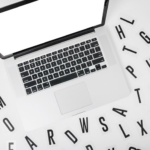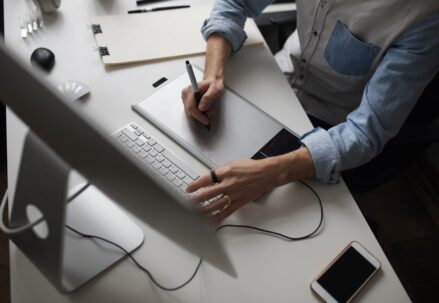Typography treatments represent a versatile array of techniques employed by adept designers to effectively manipulate text. Whether you’re crafting an engaging website, a captivating poster, or an alluring book cover, these treatments are indispensable in ensuring your design is coherent and visually pleasing.
In this comprehensive guide, we delve into the intricacies of typography treatments and how they profoundly influence your audience’s perception of your message.
Font Selection
At the core of typography treatments lies the selection of fonts. Each font conveys distinct emotions and messages. For instance, a robust sans-serif font radiates strength and modernity, while a graceful script font evokes elegance and sophistication. The key is to choose fonts that align seamlessly with your design’s purpose and the message you intend to convey.
Font Size and Hierarchy
Font size and hierarchy are paramount for directing your reader’s focus. Important information can be emphasized through larger font sizes or varying font weights. By establishing a clear hierarchy, you ensure that readers can rapidly identify the most pivotal elements of your text.
Let’s take a closer look at each of the elements:
Text Styling
Text styling encompasses techniques such as italics, bolding, underlining, and more. These treatments allow you to highlight specific words or phrases. However, the judicious use of these styles is crucial to prevent overwhelming the reader.
Color and Contrast
Color wields significant influence in typography treatments. The choice of text color, background color, and the contrast between them profoundly impacts readability and aesthetics. High contrast can make your content leap off the page, while subtle color variations create a harmonious and sophisticated appearance.
Learn best ways for awesome typography
Alignment and Spacing
The alignment and spacing of your text are critical facets of typography treatments. Justified text creates crisp, clean edges, while left-aligned text exudes a more casual feel. Appropriate line and letter spacing, known as leading and tracking, enhance both readability and aesthetics.
Decorative Elements
Enhancing your typography with decorative elements, such as drop caps, ornamental borders, or illustrative flourishes, adds a touch of panache to your text. These treatments are particularly useful for headings, titles, or special sections of your design.
Typography Treatments in Action
Let’s see typography treatments in action through various design applications:
Typography Treatments in Logo Design
Iconic logos like Coca-Cola and Disney exemplify the power of typography treatments in shaping brand identity. The fonts chosen have become synonymous with the brands themselves.
Editorial Layouts
Magazines and newspapers rely on typography treatments to effectively engage readers. Different fonts and styling create visually pleasing layouts that guide readers through content.
Achieve balance and aesthetics with Material-UI typography Center Typography in Material-UI: A Comprehensive Guide
Typography Treatments for Websites
In the digital age, web design is a prominent field where typography treatments shine. Websites rely on typography to convey information, create user-friendly interfaces, and establish a strong online presence.
The choice of fonts, font sizes, spacing, and text styling can significantly impact the user’s experience. Effective typography treatments can guide users through the site, making it easy to find essential information.
Editorial Typography Treatments
Magazines, newspapers, and editorial layouts showcase the power of typography treatments to make content engaging and reader-friendly. Editorial design requires a harmonious blend of fonts, sizes, and styling to create a cohesive and visually pleasing layout. Thoughtful typography treatments ensure readers can navigate through the publication, emphasizing key articles and sections.
Typography in Product Packaging
Product packaging is another realm where typography treatments play a pivotal role. Typography is used to convey information about the product, promote brand identity, and trigger emotions in potential buyers.
Think about a luxury chocolate brand that uses an elegant script font to evoke indulgence or a children’s snack with a vibrant and playful font to communicate fun and playfulness.
These treatments inform consumers while creating a strong connection between the product and the buyer.
User-Friendly Interfaces (UI)
In the digital realm, user interfaces rely on typography treatments to provide a clear and user-friendly experience. UI designers meticulously choose fonts, font sizes, and colors to ensure that users can interact with the interface intuitively. Consistency in typography treatments across a digital platform is key to building a strong and recognizable brand.
Event Branding with Typography
From posters and banners to invitations and programs, event branding heavily relies on typography treatments. Creative typography can turn a simple invitation into a work of art and set the tone for the event. Event organizers use typography to communicate the event’s theme, mood, and important information effectively.
Conclusion
In the ever-evolving world of design, the significance of typography treatments cannot be overstated. They are a versatile tool that can elevate your work to new heights, making your designs more engaging, informative, and emotionally resonant. Whether you’re a seasoned designer or just starting your design journey, typography treatments will serve as a valuable asset in your creative toolkit.
In design, it’s not just what you say but how you say it that truly matters. Typography treatments are your gateway to creating designs that captivate, communicate, and leave a lasting impression.
As you continue to explore the dynamic field of design, take the time to experiment with different typography treatments. Understand the psychology of fonts and the impact of various styling choices. With each project, you have the opportunity to refine your skills and create designs that stand out and make a lasting impact on your audience.





